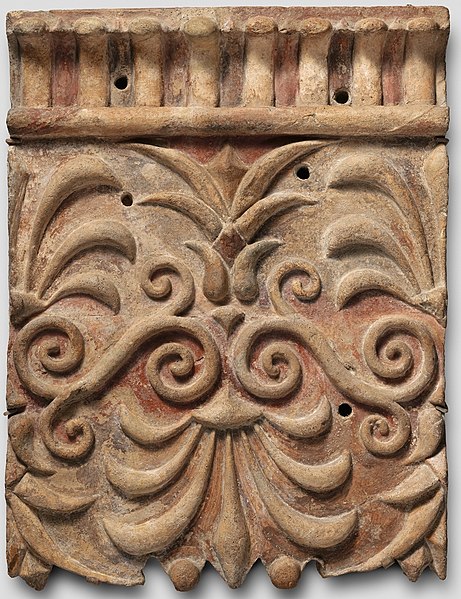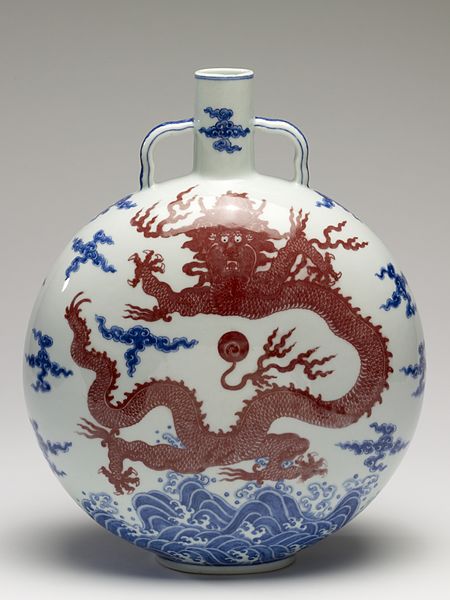The palmette is a motif in decorative art which, in its most characteristic expression, resembles the fan-shaped leaves of a palm tree. It has a far-reaching history, originating in ancient Egypt with a subsequent development through the art of most of Eurasia, often in forms that bear relatively little resemblance to the original. In ancient Greek and Roman uses it is also known as the anthemion. It is found in most artistic media, but especially as an architectural ornament, whether carved or painted, and painted on ceramics. It is very often a component of the design of a frieze or border. The complex evolution of the palmette was first traced by Alois Riegl in his Stilfragen of 1893. The half-palmette, bisected vertically, is also a very common motif, found in many mutated and vestigial forms, and especially important in the development of plant-based scroll ornament.
Page in which appear various illustrations of palmettes, from A handbook of Ornament by Franz Meyer (1898)
Etruscan architectural plaque with palmettes, from late 4th century BC, painted terracotta, in the Metropolitan Museum of Art, New York City
Nefertem, bearing a lotus as his crown
The hieroglyph akhet of the horizon guarded by the twin lions of Aker
In architecture and decorative art, ornament is decoration used to embellish parts of a building or object. Large figurative elements such as monumental sculpture and their equivalents in decorative art are excluded from the term; most ornaments do not include human figures, and if present they are small compared to the overall scale. Architectural ornament can be carved from stone, wood or precious metals, formed with plaster or clay, or painted or impressed onto a surface as applied ornament; in other applied arts the main material of the object, or a different one such as paint or vitreous enamel may be used.
Rococo interior of the Wilhering Abbey (Wilhering, Austria), with a trompe-l'œil painted ceiling, surrounded by highly decorated stucco
Chinese flask decorated with a dragon, clouds and some waves, an example of Jingdezhen porcelain
Khmer lintel in Preah Ko, (east of Angkor, Cambodia) style, late 9th century, reminiscent of later European scrollwork styles
18th-century Rococo balcony, Bavaria. The form is itself ornamental, and further decorated in painted plasterwork








